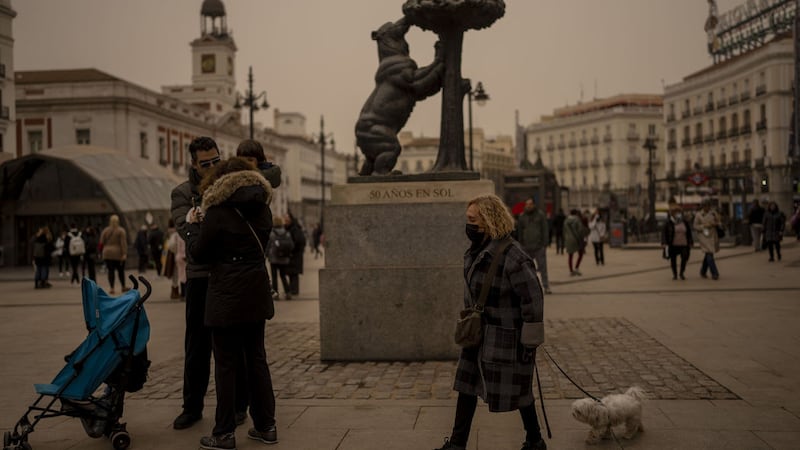Spanish officials have issued extremely poor air quality ratings for Madrid and a large swathe of the country after a mass of hot air from the Sahara dumped dust after crossing the Mediterranean.
Spain’s national air quality index qualified the capital and large parts of the south-east coast as “extremely unfavourable” – its worst rating.
Spain’s weather service described the dust storm from the Sahara as “extraordinary and very intense”, while adding that it was unclear if it was the worst episode of its kind on record.
The service forecast that the dust will continue to accumulate through until Wednesday and could reach northwards as far as the Netherlands and north-western Germany.
Many Spaniards awoke today to find a layer of red dust covering terraces, streets and cars.
The sky in the capital and other cities had a gritty tinge to them. Visibility in Madrid and cities like Granada and Leon was reduced to 2.5 miles, the weather service said.
Emergency authorities have recommended citizens use face masks if they go outside, and avoid outdoor exercise.
The wave of hot air has also affected the air quality in areas north of Madrid, as far west as in Spain’s Canary Islands in the Atlantic Ocean, where these events are more frequent, and in the Balearic Islands in the Mediterranean.
The weather service said that the mass of hot air from Africa, which was brought in by a storm that delivered some much-needed rain for drought-hit Spain, has also pushed up temperatures in some areas to 20C.
Ruben del Campo, a spokesman for Spain’s weather service, said that while it was unclear if climate change had a direct link to this episode, the expansion of the Sahara desert over the past century has increased the potential for larger dust storm events in Europe.
He also said that the increasingly turbulent weather patterns linked to climate change could play a part.
“There are many concerns regarding the impact that climate change is having on the patterns of the frequency and intensity of the storms that favour the arrival of dust to our country,” Mr del Campo said.








